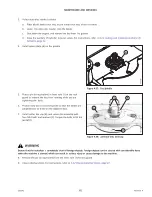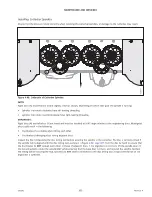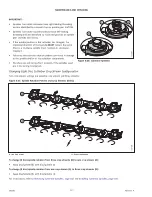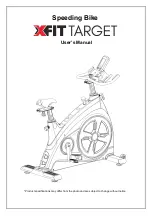
262391
99
Revision A
1004000
A
A
C
C
D
E
B
B
Figure 4.34: Cutterbar Disc
6.
Inspect cutterbar disc surface (D) for cracks, excessive wear,
and check if the disc is distorted. Replace any damaged
discs immediately.
7.
Inspect cutterbar disc edges (E) for cracks, excessive wear,
and check if the edge is distorted. Replace any damaged
components immediately.
8.
Ensure that disc blade fasteners (A) are securely attached
to the cutterbar disc and that nut shields (B) are present
and undamaged. Replace any damaged components
immediately.
9.
Check that cutterbar disc bolts (C) are securely attached to
the spindles. Tighten the bolts as needed.
Removing Cutterbar Discs
Cutterbar discs may need to be removed for replacement or so they can be swapped to change the type of crop stream.
DANGER
To prevent injury or death from the unexpected start-up or fall of a raised machine, always stop the engine and remove
the key from the ignition before leaving the operator
’
s seat or making adjustments to the machine. If the rotary disc
header is raised, always close the lock-out valves, and place blocks under the header. Never work on or beneath an
unsupported header.
DANGER
Ensure that all bystanders have cleared the area.
WARNING
Disc blades have two sharp cutting edges that can cause serious injury. Exercise caution and wear gloves when working
with, or near, blades.
1.
Position the rotary disc header at an appropriate height for the task.
2.
Shut down the engine, and remove the key from the ignition.
3.
If the rotary disc header is raised:
a.
Place blocks under each end, or just inside each end, of the cutterbar.
b.
Lower the rotary disc header onto the blocks.
c.
Shut down the engine, and remove the key from the ignition.
d.
Close the auxiliary lift cylinder lock-out valves. For instructions, refer to
3.2.1 Locking and Unlocking Auxiliary Lift
.
4.
Open the cutterbar doors. For instructions, refer to
















































